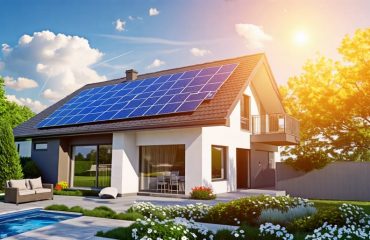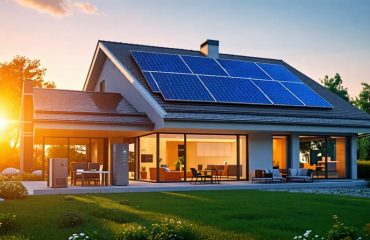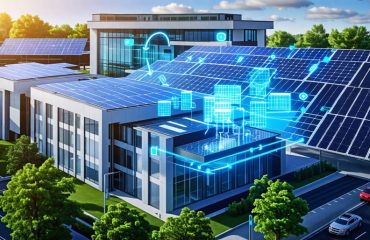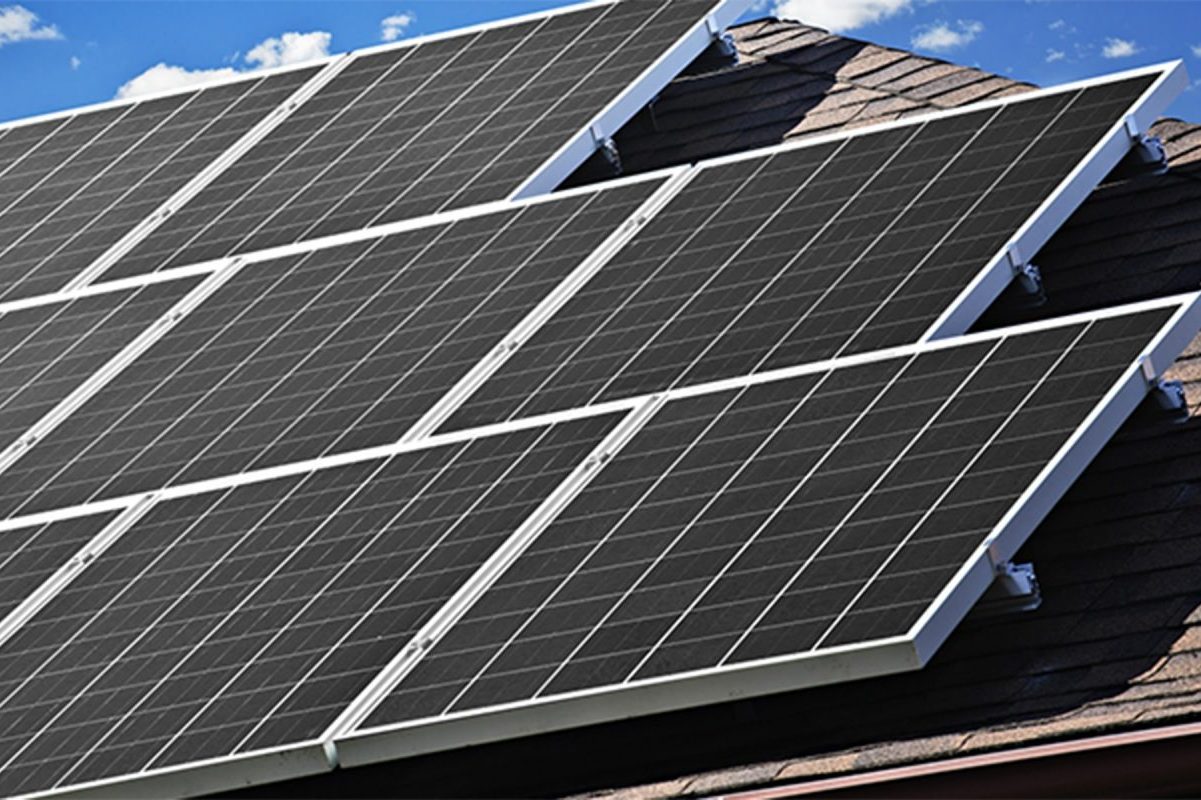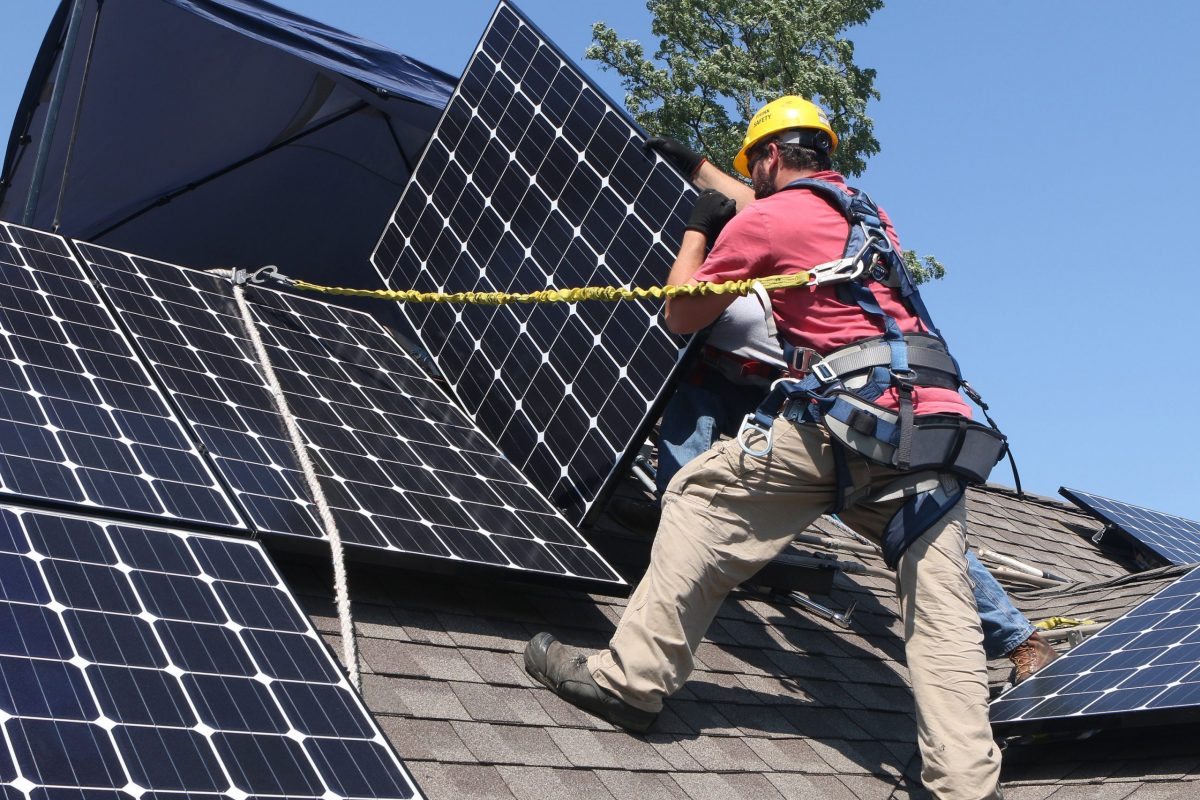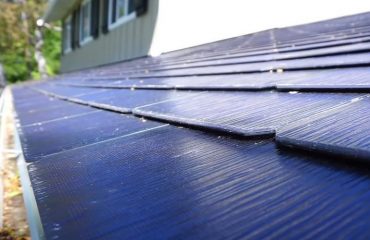Discover the power of harnessing nature’s energy right at home. Solar panels and wind turbines allow you to generate your own clean, renewable electricity, reducing reliance on the grid. While the upfront investment may seem daunting, incentives like tax credits and net metering can significantly offset costs. Plus, you’ll enjoy long-term savings on energy bills. Contrary to common misconceptions, these systems are durable, require minimal maintenance, and can be adapted to suit various property types. With expert guidance, taking the first steps towards energy independence is easier than you think. Embrace the future of sustainable living – explore home solar and wind power today.
How Solar and Wind Power Systems Work

Solar Panels
Solar photovoltaic (PV) panels harness the power of the sun to generate clean, renewable electricity for your home. These panels are made up of numerous solar cells that convert sunlight directly into electricity through the photovoltaic effect. When sunlight strikes the solar cells, it excites electrons and creates an electrical current. This direct current (DC) electricity is then sent to an inverter, which converts it to alternating current (AC) electricity that can be used to power your home appliances and electronics. The amount of electricity generated depends on factors such as the size and efficiency of the solar panels, the intensity of sunlight, and the angle at which the panels are installed. With advancements in technology, solar panels have become more efficient and cost-effective, making them an increasingly popular choice for homeowners looking to reduce their carbon footprint and save money on energy bills.
Wind Turbines
Residential wind turbines harness the power of wind to generate clean electricity for your home. As wind turns the blades, a rotor captures the kinetic energy and converts it into electrical energy through a generator. The electricity is then sent to your home’s electrical panel for use. Wind turbines come in various sizes, with smaller models suitable for residential properties. To maximize efficiency, wind turbines should be installed in open areas with consistent wind speeds, such as hilltops or coastal regions. With proper placement and maintenance, a wind turbine can significantly reduce your reliance on grid electricity and lower your energy bills.
Benefits of Powering Your Home with Solar and Wind
Lower Energy Bills
Generating your own electricity with solar panels or wind turbines can significantly reduce your reliance on the utility grid, leading to lower monthly energy bills. By harnessing the power of the sun or wind, you can offset a substantial portion of your electricity consumption, potentially saving hundreds or even thousands of dollars annually. The exact savings will depend on factors such as your location, system size, and energy usage patterns. Over the long term, these savings can add up, making solar and wind power systems a smart financial investment that save homeowners money while also reducing their carbon footprint. In some cases, you may even generate excess electricity that can be sold back to the grid, further offsetting your costs. As utility rates continue to rise, the financial benefits of renewable energy become increasingly attractive for budget-conscious homeowners.

Increased Home Value
Installing solar panels or wind turbines can significantly increase your home’s resale value. Studies show that homes with solar energy systems sell for 4.1% more on average than comparable homes without solar power. For a median-valued home, that translates to an additional $9,274. The exact boost in home value depends on factors such as system size, local electricity rates, and market demand for green homes. As more buyers prioritize energy efficiency and sustainability, homes with renewable energy features become increasingly attractive. Moreover, solar and wind installations demonstrate lower operating costs, making your property more desirable to potential buyers seeking long-term savings on utility bills.
Environmental Benefits
Home solar and wind power systems provide significant environmental benefits by reducing your reliance on fossil fuels. These renewable energy sources generate clean electricity without emitting harmful greenhouse gases, helping to combat climate change. By adopting solar or wind power, you can reduce your carbon footprint and contribute to a more sustainable future. Additionally, these systems decrease the demand on the electrical grid, which in turn lowers the need for coal and natural gas power plants that pollute the air and water. Investing in home renewable energy not only benefits your household but also supports the growth of the clean energy industry, creating a ripple effect of positive change. As more homeowners embrace solar and wind power, we can collectively work towards a greener, healthier planet for generations to come. By making the switch, you become part of the solution in the fight against environmental degradation and climate change.
Debunking Common Myths
Myth 1: Too Expensive
While solar panels and wind turbines were once prohibitively expensive, costs have plummeted in recent years. Since 2010, solar panel prices have dropped by over 70%, making them more accessible than ever. Many states also offer incentives like tax credits, grants, and rebates to help offset upfront costs. With innovative financing options such as leases and power purchase agreements, homeowners can now go solar with little to no money down. When you factor in long-term energy savings and the potential to sell excess power back to the grid, investing in a home renewable energy system can be a smart financial decision. As technology continues to improve and more people adopt solar and wind power, costs are expected to decrease even further in the coming years.
Myth 2: Unreliable
While solar and wind power are indeed variable energy sources, modern systems are designed to provide reliable electricity. Properly sized solar panels and wind turbines, coupled with energy storage solutions like batteries, ensure a steady power supply even during periods of low sunlight or wind. Advanced monitoring and control systems optimize energy production and usage, adapting to changing conditions. With the right design and components, home solar and wind power systems can dependably meet your energy needs, reducing reliance on the grid. As technology continues to improve, these systems are becoming even more efficient and reliable, making them a smart choice for eco-conscious homeowners seeking energy independence.
Myth 3: Difficult to Maintain
Modern residential solar and wind power systems are designed for minimal maintenance. Solar panels typically require only occasional cleaning to remove debris, while wind turbines may need annual lubrication and inspection. Many systems come with remote monitoring, allowing homeowners to easily track performance and identify any issues. With proper installation and quality components, home renewable energy systems can provide reliable, low-maintenance power for decades. Manufacturers often offer warranties and service plans for added peace of mind. Compared to the constant upkeep and repairs associated with traditional HVAC systems and appliances, solar and wind power systems offer a hassle-free alternative for eco-conscious homeowners.
Getting Started with Home Solar and Wind
Assessing Your Home’s Solar and Wind Potential
To assess your home’s solar and wind potential, start by evaluating your property’s sun and wind exposure. Observe how much direct sunlight your roof receives throughout the day and note any shading from trees or neighboring structures. For wind power, consider your area’s average wind speeds and the presence of nearby obstacles that could affect turbine performance. Consult solar and wind resource maps to estimate your location’s energy potential. Additionally, have a professional conduct a site assessment to provide a more accurate evaluation of your home’s renewable energy capacity and recommend the most suitable system size and configuration for your needs.
Working with a Reputable Installer
When selecting a solar or wind power installation company, it’s crucial to choose an experienced, credible provider. Look for installers with a proven track record, relevant certifications, and positive customer reviews. A reputable installer will assess your energy needs, recommend the best system configuration, and handle all aspects of the installation process professionally. They should also offer comprehensive warranties and after-sales support. Working with a trusted installer ensures that your renewable energy system is designed and installed to the highest standards, maximizing its performance, reliability, and long-term value. Don’t settle for less when it comes to investing in your home’s sustainable energy future.
Conclusion
Home solar and wind power systems offer a range of benefits, from reducing your carbon footprint to lowering your energy bills. By harnessing the power of the sun and wind, you can generate clean, renewable energy right at home. These systems are becoming increasingly accessible and affordable, making it easier than ever to embrace sustainable living. With advancements in technology and growing support from governments and utilities, now is the perfect time to explore your options. Whether you’re ready to make the switch or just starting to learn about renewable energy, taking the first step towards a greener future is an investment in both your home and the planet.


